
Ještěd in the cage 12 - nomination - Lenka Juchelková
Lomnice nad Popelkou
atelier of Ing. arch. Akad. arch. Jan Hendrych and Ing. arch. Ing. Jiří Janďourka
I am from Lomnice, even though I was born in Turnov, because that’s where the maternity hospital is. And even though I wander a lot around the world and currently live in Berlin, I know that I am at home in Lomnice and often come back here. I have a large part of my family in Lomnice and I still have a permanent residence here, and I do not intend to change that.
You simply cannot rid yourself of this trembling in your heart.
You simply cannot rid yourself of this trembling in your heart.
Jaroslav Rudiš about Lomnice nad Popelkou
HISTORY. Lomnice nad Popelkou is a typical town in the Podkrkonoší region. In the 15th century, it was an important center for the surrounding area, and in the 19th century, there was enormous industrial development here. It was mainly about the textile industry, weaving, and the related production of textile machines. In the 20th century, industry in Lomnice began to decline and the role of a center was taken over by nearby Semily.
Most towns in the vicinity with a similar fate struggle with a decrease in population. However, Lomnice surprisingly does not have this problem. Thanks to the fact that the town narrowly missed the borders of the Sudetenland, there was no expulsion of residents or artificial settlement here. Its residents have been here for several generations, there is quite a strong connection to the place, and Lomnice is not significantly depopulating. The only problem is the transfer of schools and job opportunities to larger towns in the vicinity, mainly to Semily.
URBANISM. The structure of Lomnice goes back to the 14th century when it was established as a strip village, which is still evident today. The main road runs from the north to the south through the center, along which all significant buildings and the center are arranged.
The character of Lomnice is largely rural. The center, which has clear signs and characteristics of a town, is fairly accurately defined by the main square and adjacent streets. On the mentioned road, it could be bordered by the school to the south and the upper end of the square to the north.
The rest of Lomnice, however, comes across more like a village than a town.
DESIGN. The addressed area is located north of the square. Its shape resembles a mirror image of the square and naturally connects to it. I decided to give the area content and character that suits its location, in some kind of contrast to the square. To the square as a center of urban character, I therefore created a village green in Lomnice as the center of rural character.
Originally, there was the Brewery Pond, which was abolished around 1900, and in its place, a bus station was established, which matched the capacity that more than a thousand people arrived in Lomnice daily for work and school. Today, such capacity is unnecessary, so I significantly reduced the bus station and restored the Brewery Pond on the remaining area.
The design has five parts: BUS STATION, BREWERY POND, CASTLE, SQUARE, and CHURCH.
BUS STATION. I significantly reduced the bus station because the existing bus station was unnecessarily large. Three bus stops and three bus parking spaces are entirely sufficient for the needs of Lomnice.
The approach of buses to the stops is solved by a one-way street for buses only, which then connects to the street by the parking lot.
The bus station building encloses the green. It separates it from the parking lot and road and opens up towards the pond. The space offers various options for spending time while waiting for a bus. A covered outdoor section for those who just want to hide from the sun or rain, an information waiting area on the left, and a café on the right that opens up to a terrace. Of course, the necessary facilities for the operation of the bus station are included - information and seat reservation sales and facilities for the bus driver. The building is made of red bricks that appear on surrounding buildings.
The bus station is not just to be a waiting area for passengers but a center and meeting place for the whole green.
BREWERY POND. I have significantly reduced the bus station because the existing bus station was unnecessarily large. Three bus stops and three bus parking spaces are entirely sufficient for the needs of Lomnice.
The approach of buses to the stops is solved by a one-way street for buses only, which then connects to the street by the parking lot.
The bus station building encloses the green. It separates it from the parking lot and road and opens up towards the pond. The space offers various options for spending time while waiting for a bus. A covered outdoor section for those who just want to hide from the sun or rain, an information waiting area on the left, and a café on the right that opens up to a terrace. Of course, the necessary facilities for the operation of the bus station are included - information and seat reservation sales and facilities for the bus driver. The building is made of red bricks that appear on surrounding buildings.
The bus station is not just to be a waiting area for passengers but a center and meeting place for the whole green.
CASTLE. My intervention begins already at the intersection in the northern corner of the square. The intersection was unclear, the road here was unnecessarily wide, and it was not possible to cross safely. The unclear situation at the intersection was simplified by abolishing access to the bus station; I left only an entrance for deliveries. I leveled the castle garden to the height of the castle and defined the space with a resulting wall so that the road was narrowed to a width that makes it possible to pass safely at a reduced speed, creating a kind of speed bump before entering the square. The wall also clearly delineates where the entrance and passage to the castle and the pond are.
SQUARE. Another part of my solution is the modification of the square. The square in Lomnice is a meeting place for locals. The number of shops in the square, including, for example, food, a confectionery, a vegetable shop, etc., works perfectly here. The disadvantage of the square in its current form is the number of parking spaces, which basically turns it into a parking lot. Another problem is that the square is essentially on the main passage through Lomnice, so cars travel through at a speed that is dangerous for pedestrians.
I have widened most of the sidewalks in the square to allow for a more comfortable passage and created space for benches and possibly bike racks. Throughout the square, I have also limited the number of parking spaces. Parking is possible at the bus station, in front of Penny, or in a parking lot that I placed in a gap in the southern part of the square. (see section A).
I proposed restricting traffic through the square. In the left part of the square, it is not necessary for cars to pass through. If necessary, they can pass through the right part of the square, and thus the left will remain passable only for service traffic. A pedestrian zone will be created here.
The right part of the square will remain a passage through the town. However, it is narrowed so that it can be passed safely, but drivers are forced to maintain a speed of up to 50 km/h.
Part of the modification is thus the placement of a greater number of benches than there are in the square today, and also bike racks, which are almost nonexistent in the square, even though many people ride bikes around Lomnice.
CHURCH. The church stands at the lower part of the square, and its position in relation to the street is atypical at first glance. Because the church juts into the square with its corner, triangular spaces are created on either side of it, which do not have clearly defined functions. One of them serves as a forecourt for the entrance to the church. In the second, I propose a smaller garden, which, with its wall, will support the linearity of the street and connect to the surrounding houses. The garden itself will be a semi-public space creating calm and distance from the busy road around the church.
Additionally, I decided to restore the path from the church to the cemetery, which is currently impassable due to unclear ownership rights.
The English translation is powered by AI tool. Switch to Czech to view the original text source.
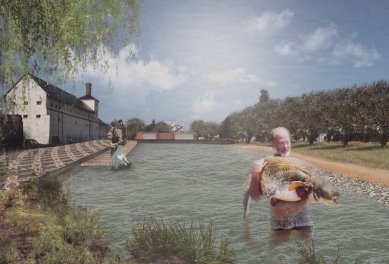
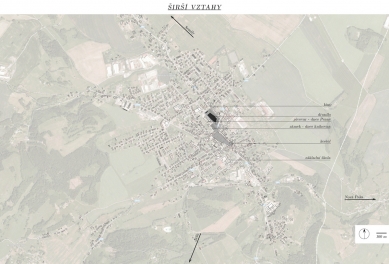
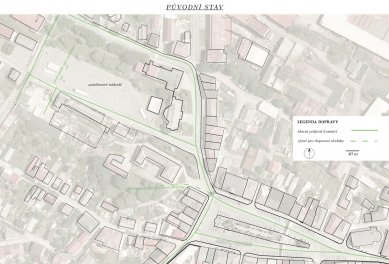


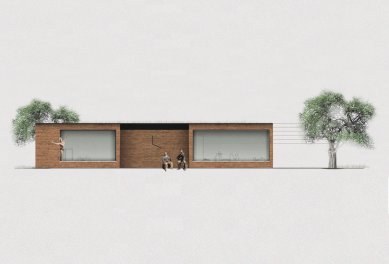
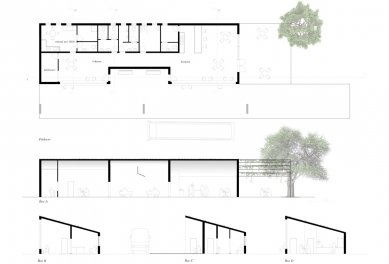
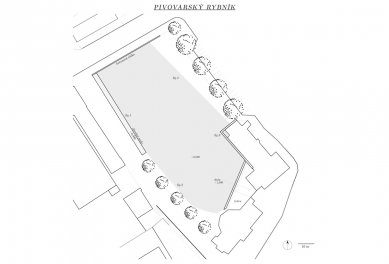

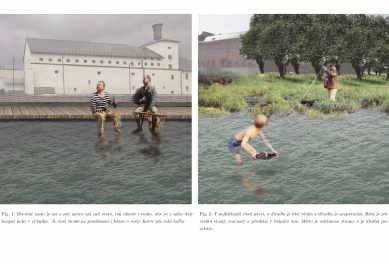
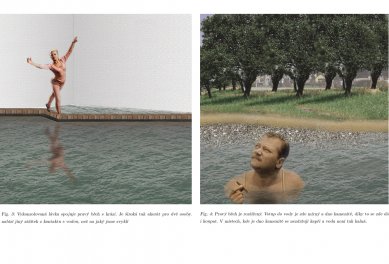

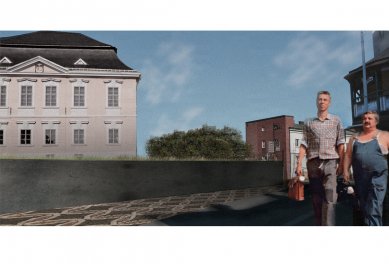
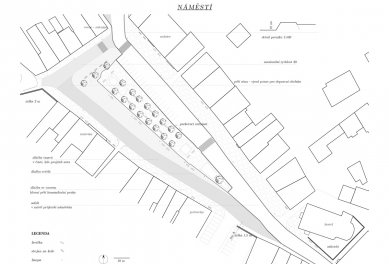


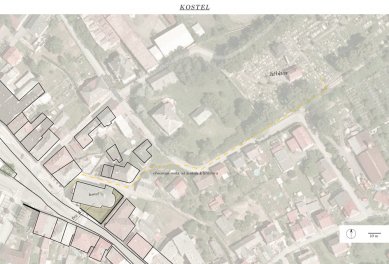
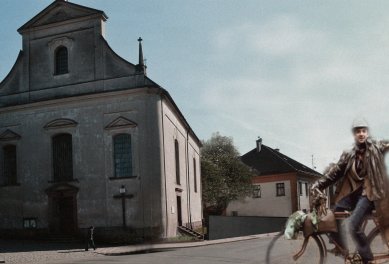
0 comments
add comment
Related articles
0
07.07.2014 | Ještěd in the cage 12 - winner - Tina Peterková
0
07.07.2014 | Ještěd in the Cage 12 - Nomination - Eliška Málková, Petr Láska
0
07.07.2014 | <div>Ještěd in a cage 12 - nomination - Barbora Tauerová</div>
0
07.07.2014 | <translation>Ještěd in a cage 12 - nomination - Karolína Dvořáková</translation>
0
07.07.2014 | Ještěd in the Cage 12 - nominations - Adam Lacina
2
07.07.2014 | Jěštěd in the cage 12 - nomination - Zuzana Neťuková
0
07.07.2014 | <!DOCTYPE html>
<html lang="en">
<head>
<meta charset="UTF-8">
<meta name="viewport" content="width=device-width, initial-scale=1.0">
<title>Translation</title>
</head>
<body>
<h1>Ještěd in the Cage 12 - Nomination - Klára Paterová</h1>
</body>
</html>
0
07.07.2014 | <!DOCTYPE html>
<html lang="en">
<head>
<meta charset="UTF-8">
<title>Ještěd in a Cage 12 - Nominations - SPACE S</title>
</head>
<body>
<h1>Ještěd in a Cage 12 - Nominations - SPACE S</h1>
</body>
</html>
0
07.07.2014 | <html>Ještěd in the cage 12 - nomination - V. Šaroun, M. Holba, M. Čáslavská, M. Štefanová, K. Bužková, K. Holan</html>
0
18.06.2014 | Ještěd in the cage 12 - ceremonial announcement






